For my first DIY CNC Router made from aluminum extrusion I have begun on the Y-axis construction. If you’ve read the previous parts then you’ll know he progress up to this point, and progressing onto the construction of this particular component is another huge step forward. I assembled some of the components for Y-axis for the photos but they’ve not as of yet been cut down to size or properly aligned. The intent is to show what I’m thinking on this part.
A large portion of my time lately has been to get the blocks which connect the y-axis to the linear rails as flat as I can, at least where they mount to the linear rails, to eliminate binding of the linear rails which occurred when I tightened down the bolts. Due to the surface being uneven, it warped the linear cars and caused them to bind. Now that the plates are sanded much flatter, this problem is not evident which is great.
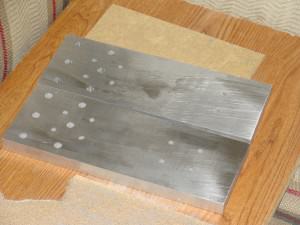
The Y axis is mounted to the blocks. I did a fair bit of drill press machining to prep the blocks for mounting the Y-axis. It consists of 2 upright Bosch-Rexroth aluminum extrusions mounted to the linear rail blocks. Additionally there are two smaller aluminum parts mounted to the blocks which will be used to mount a 45 degree angle reinforcement beam to the Y-axis, hopefully strengthening it even more and reducing flex during operations.
The picture below gives and overall view of my current progress and plans for the DIY CNC router, you can see how the Y-axis will straddle the X-axis and run up and down the length of the table. The long blocks for the rail mounts do reduce the total transit of the Y-axis, but not too much. I intentionally built the table a bit longer to allow for this. My goal is to obtain at minimum a 36 inch x 36 inch area of movement for the table. I am still deciding on which linear drive to use for the Z-axis. The base table is 45 inches long by 36 inches wide.
I also took some close up shots of the assembly of the gantry (the y-axis). These are not completed assemblies though, I pieced the parts together to get an idea of my next steps. The picture below shows the left Y-axis rail mount. The aluminum block has been heavily machined with a drill press. The aluminum extrusions are held to the block with 10mm bolts, a total of twelve metric bolts hold the vertical and horizontal extruisions in place. The 45 degree angular piece of extrusion will be held to those pieces with t-nuts to provide extra reinforcement.
Below is the back angle view of the left side tower and horizontal Y-axis cross bars for the DIY CNC router. I temporarily have 1×1 bolt pattern corner braces installed but they will be replaced with 2×2 bolt pattern corner braces once I begin to finalize the construction of this component. Additionally there will be 2 of these braces on each end of each extrusion for a total of 8 braces for the two horizontal pieces which make up the gantry transit path. (left to right)
Here is are some other perspective views, this time of the right side of the gantry / y-axis assembly.
If you check out the photo below you might get a better idea of how I’m reinforcing the vertical extrusion for the gantry. I’m trying to build this CNC machine to be very rugged and stiff so that I can perform light machining on aluminum. I’m hoping that this arrangement will be stiff enough, but if it’s not I will double up on the vertical, horizontal and angular components on each side of the gantry to stiffen things up more. Rather than go totally nuts I wanted to build it this way first and see what the results were. That’s the great thing about using modular components, you can always alter and modify the setup much more easily than a welded steel or aluminum CNC machine. The disadvantage is that aluminum is much more prone to flexing and can be less rigid than steel.
You can see in the image below the interface point between the horizontal gantry extrusions and the vertical gantry extrusions. The 1×1 corner blocks are just temporary and will be replaced with 4 2×2 blocks per side for reinforcement. You can see there is a gap between the horizontal Bosch-Rexroth aluminum extrusions. The ball screw or acme screw will be mounted in the space to allow for close coupling between the screw drive and the linear rails. Additionally 3/8ths inch end plates will be attached to the outside (right side in the picture below) surface to further add to the structural strength of the assembly.
That’s where I am right now, it took a LOT of sanding of the aluminum linear rail mounting blocks, days worth of work here and there and then several hours to drill the blocks and tap the mounting holes for the aluminum extrusions. I think this will have been one of the most time consuming parts of this project due to the large amount of sanding. For the z-axis I’m just going to bite the bullet and buy a piece of blanchard ground aluminum plate to save myself the sanding time.
Previous: Precision Linear Guides
Next: Y-axis Construction 2
Search CNC Posts

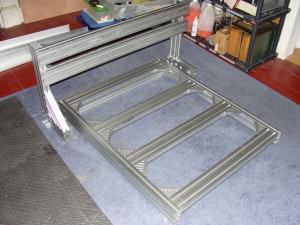
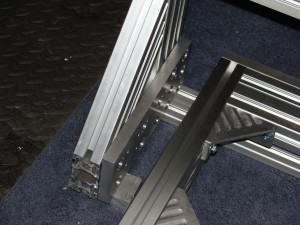
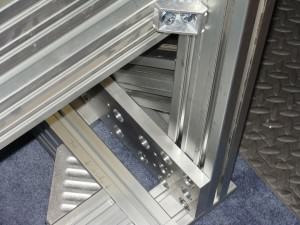
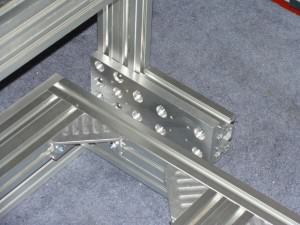
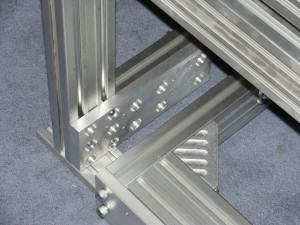
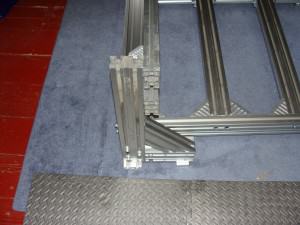
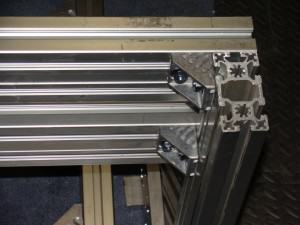
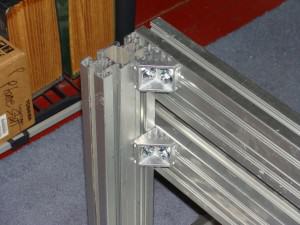
2 responses to Part 8: DIY CNC : Y-Axis Construction
Wow that was a lot of fun watching the video. Everything you do is quality. I just sent it to dad.
Love you-Mom
I finished the linear mounting blocks and now working on the gantry for my DIY CNC router #DIYCNC http://bit.ly/mp3wkT
Leave a reply to Part 8: DIY CNC : Y-Axis Construction